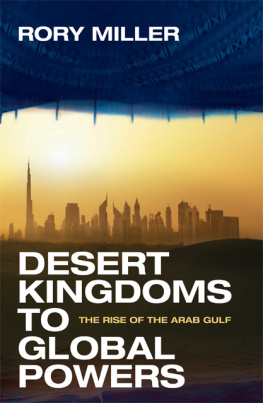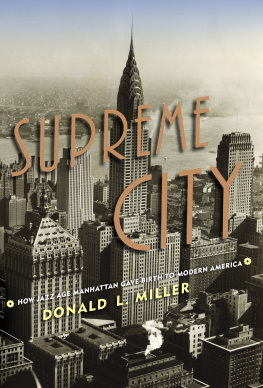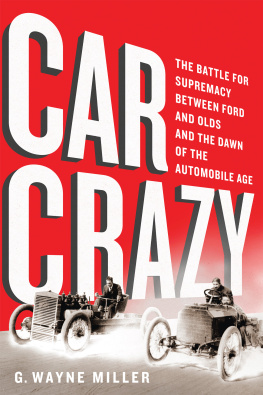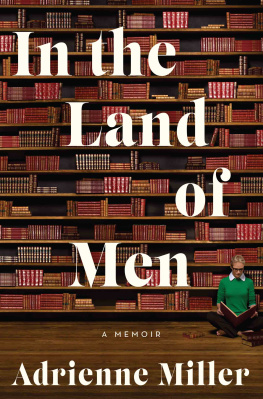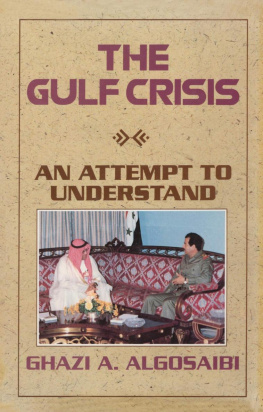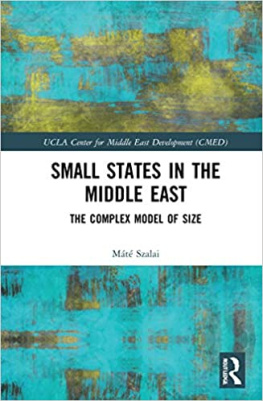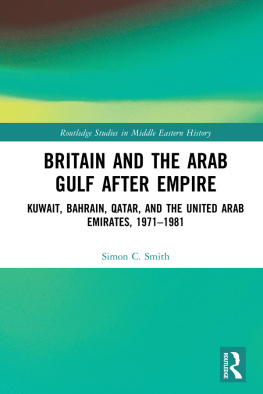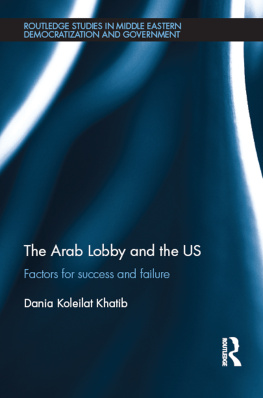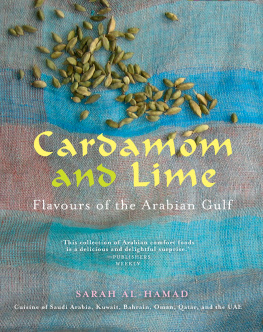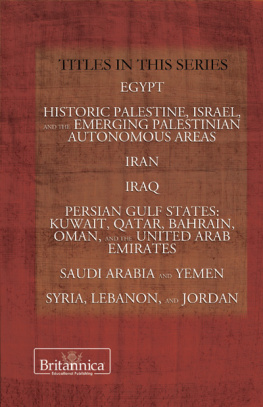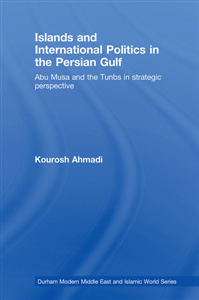DESERT KINGDOMS TO GLOBAL POWERS

Copyright 2016 Rory Miller
All rights reserved. This book may not be reproduced in whole or in part, in any form (beyond that copying permitted by Sections 107 and 108 of the U.S. Copyright Law and except by reviewers for the public press) without written permission from the publishers.
For information about this and other Yale University Press publications, please contact:
U.S. Office:
Europe Office:
Typeset in Adobe Caslon Pro by IDSUK (DataConnection) Ltd
Printed in Great Britain by Gomer Press Ltd, Llandysul, Ceredigion, Wales
Library of Congress Cataloging-in-Publication Data
Names: Miller, Rory, 1971- author.
Title: Desert kingdoms to global powers : the rise of the Arab Gulf / Rory Miller.
Description: New Haven : Yale University Press, 2016. | Includes bibliographical references and index.
Identifiers: LCCN 2016024734 | ISBN 9780300192346 (c1 : alk. paper)
Subjects: LCSH: Persian Gulf RegionEconomic conditions. | Persian Gulf RegionPolitics and government. | Persian Gulf RegionForeign relations.
Classification: LCC HC415.3 .M55 2016 | DDC 330.9536dc23
LC record available at https://lccn.loc.gov/2016024734
A catalogue record for this book is available from the British Library.
10 9 8 7 6 5 4 3 2 1
To Erin and Maddy
CONTENTS
ACKNOWLEDGEMENTS
T he initial idea for this book was born out of conversations I had in 2012 with Phoebe Clapham, then a commissioning editor at Yale University Press, who had attended a talk I gave at the LSE a few months earlier on contemporary security challenges in the Arab Gulf. We believed that it could translate into a reader-friendly book on the region, aimed at a non-academic audience. In the years since then, I have been well served by my editors at Yale Rachael Lonsdale, Heather McCallum and Melissa Bond. All have offered guidance, demonstrated great patience and, above all, been generous with their support and enthusiasm for this project throughout the entire process. I would also like to thank the various anonymous reviewers who provided feedback on the initial book proposal and on the final draft of the manuscript. The book has benefited greatly from their expert advice and recommendations.
Over the course of the project, the following former and current students have provided invaluable research assistance: Guiditta Fontana, Sarah Cardaun, Jihane Benamar, Yasmeen Hamad and Kareem Malas. I would also like to thank Rofaida Azzam, Haya Al-Romaihi and Jaber Al-Thani for their thoughts and feedback on many of the issues discussed here. My Georgetown colleagues Dan Stoll and Sonia Alonso gave detailed and invaluable comments on large parts of the manuscript. Id also like to acknowledge the ongoing support of my colleagues and friends in academia in Doha, London and Dublin: especially Sohaira Siddiqui, Michael Kerr, Simon Waldman, Clive Jones, Amnon Aran, Eunan OHalpin and Michael Kennedy.
On a personal note, Gus Nichols was kind enough to read some early chapters, and Alan Shaw has been a constant source of support over the last few years. I would also like to thank Dermot Brosnan, Jonny Orr, Stuart Fox, Andy McConnell, Richard Knatchbull, Rizwan Rahman, Mateen Qureshi, Mahveen Azzam, Louise OToole, Simon Meldrum, Jason Stuart and Cedric Heather for their continued friendship. I was an absentee friend while I worked on this book, but having them all there for me was always appreciated. My mother, Marion, my siblings, Lisa, Daniel and Emma, and their families have, as always, been hugely supportive. Finally, my wife, Michelle, and my daughters, Erin Ruby and Madeleine Rose, have had to endure me working on this project mornings, nights, weekends and holidays for much of the past few years. For that and for everything else, I am immensely grateful to all three. This book is for them.

Map of the Arab Gulf States

1. Muslim pilgrims circumambulate (tawaf ) the sacred Kaaba during sunrise after fajr prayer in Mecca, Saudi Arabia.

2. President Nixon and Mrs Nixon welcome King Faisal of Saudi Arabia on a visit to the United States in May 1971.

3. Henry Kissinger (left), the US Secretary of State, meets the Shah of Iran (right) in Zurich in early 1975.

4. Sheik Yamani talks about oil and the Palestinian problem during a press conference in Saudi Arabia in July 1979.

5. Crowds oflranian protestors demonstrate in support of exiled Ayatollah Sayyid Ruhollah Khomeini in 1978, the year prior to the revolution.

6. Iraqi leader Saddam Hussein addresses members of his armed forces shortly before the invasion of Iran in September 1980.

7. Saudi Arabian soldiers prepare to load into armoured personnel carriers during clean-up operations following the Battle of Khafji, 2 February 1991. The Battle of Khafji was the first major ground engagement of the 1991 Gulf war.

8. Palestinian women demonstrate with Palestinian and Iraqi flags and portraits of Yasser Arafat and Saddam Hussein in the West Bank during the Kuwait crisis of 199091.

9. Kuwaiti men dance in the streets and Egyptian coalition forces join in as they celebrate the liberation of Kuwait from Iraqi occupation, 28 February 1991, in Kuwait City, Kuwait.

10. US General H. Norman Schwarzkopf, commander-in-chief, US Central Command, dictates conditions for a ceasefire of combat operations to Iraqi generals during talks, 3 March 1991, in Safwan, Iraq. Next to General Schwarzkopf is General Khalid bin Sultan (right), the senior Saudi military officer and commander of Joint Forces in Saudi Arabia, and across the table are two Iraqi lieutenant-generals.

Next page
